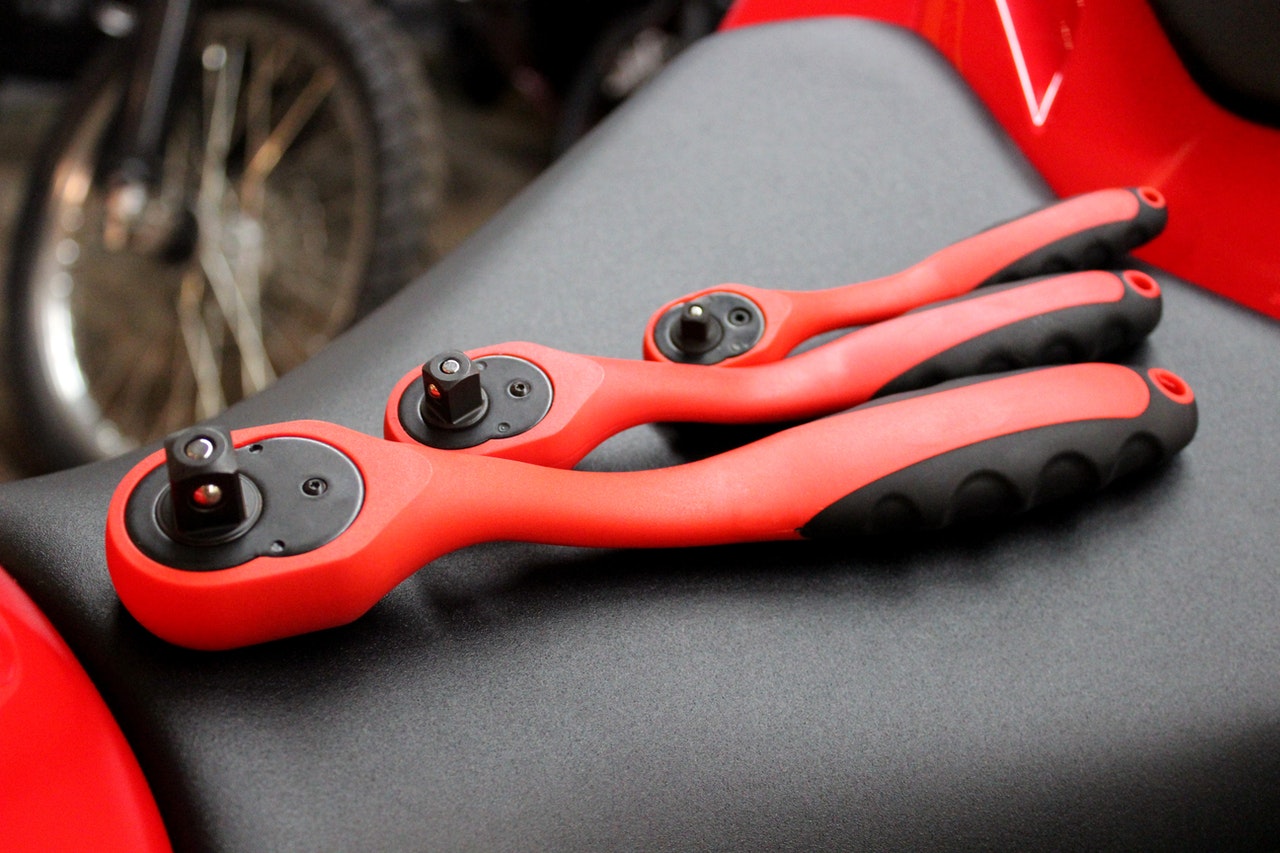In a busy city like Moscow, cycling is becoming a popular mode of transportation for many people. Cyclists have to navigate through traffic, avoid obstacles and maintain balance while cycling on busy roads. However, a group of Russian scientists have developed a robotic arm that aims to make cycling safer and easier for riders. The arm, which can be mounted on a bicycle, can help cyclists navigate through tough terrain, provide additional support when needed, and even help carry objects. With the aim of making cycling more accessible and safer, this technology has the potential to revolutionize the way we approach cycling. In this blog post, we will take a closer look at this innovative development and what it could mean for the future of cycling.
Explanation of the purpose of the project and its potential benefits for cyclists
The robotic arm project, developed by Russian scientists, aims to assist cyclists with arm fatigue during long rides. The device can be mounted on the handlebars of a bicycle and works by taking weight off the cyclist’s arms and transferring it to their core muscles. In turn, this can help cyclists from experiencing numbness and pain in their hands and arms. The potential benefits for cyclists include improved comfort during longer rides, increased endurance, and decreased risk of repetitive strain injuries. Overall, this innovative project has the potential to revolutionize cycling technology for riders of all levels.
Overview of the Russian scientists leading the project and their previous work in robotics
The team of Russian scientists who are behind the development of the robotic arm for cyclists is an experienced group of researchers. They have been working on robotics and prosthetics for over two decades. The main goal of this project is to provide cyclists with a way of controlling their bikes without using their arms, which could be helpful for people with disabilities or injuries. The team has previously worked on numerous robotic projects, such as exoskeletons and prosthetic limbs, and they have achieved significant success in their field. Their previous work has been recognized internationally, and they have won various awards for their innovative designs. With their expertise in robotics, the team is confident that they will be able to deliver a product that will aid avid cyclists and make cycling more accessible to everyone.
Description of the design of the robotic arm and how it will attach to a bicycle
The Russian scientists have designed a high-tech robotic arm that is specifically built for cyclists. The prototype model is an extension of the original design for robotic prosthetic arms and is designed to be easily attached to a bicycle. The arm is made of lightweight materials and is easily adjustable to fit all types of bicycles. The robot arm has a unique design that allows it to move in tandem with the cyclist’s movement, making it possible to control the bike without the use of hands. The arm has a series of sensors that are designed to detect the commands of the rider’s muscles, enabling it to perform the desired actions. This innovative technology is sure to revolutionize the cycling industry and is an exciting development for the world of sport.
Discussion of the technology used in the arm, including sensors and algorithms
The robotic arm being developed by Russian scientists for cyclists is a fascinating piece of technology. It incorporates various sensors and algorithms to ensure that it can provide the necessary support to the rider while also anticipating what movements they will make.
The arm will be equipped with a range of sensors, including accelerometers and gyroscopes, which will detect the orientation, velocity, and acceleration of the cyclist. It will also have force sensors that can detect the pressure applied by the cyclist’s arms and hands.
All of this data will be fed into a sophisticated algorithm that will predict the cyclist’s movements based on their speed, acceleration, and the terrain they are cycling on. The arm will respond accordingly, providing additional support or resistance to the rider as required.
This level of technology has the potential to revolutionize the cycling experience for people of all abilities. For those with disabilities or injuries, it could allow them to cycle independently, while for competitive cyclists, it could offer a valuable tool to enhance their training and performance. It’s exciting to see how far technology has come and the possibilities it opens up for the future.
Explanation of how the arm will assist cyclists while riding, including increased stability and power output
The new robotic arm being developed by Russian scientists is set to revolutionize cycling as we know it. The arm has been designed to assist cyclists while riding, providing increased stability and power output. Cyclists will be able to significantly increase their power and performance through this innovative technology. By using sensors and actuators, the robotic arm will be able to monitor and adjust to the cyclist’s movements, providing additional support as needed. Additionally, the arm will provide riders with greater stability, particularly during challenging terrain or high-speed racing. Overall, the new robotic arm has the potential to reshape the cycling landscape, making it more accessible and enjoyable for riders of all skill levels.
Details on the arm’s ability to adapt to different terrains and riding styles
The robotic arm developed by Russian scientists is designed to adapt to various terrains and riding styles. It is equipped with advanced sensors that can detect changes in the road surface and adjust its movements accordingly. This means that cyclists can use the arm on a variety of surfaces, including rough terrain and steep inclines, without compromising their stability or safety.
Additionally, the arm can be adjusted to suit different riding styles. For example, cyclists who prefer a more upright riding position can set the arm to a higher angle, while those who prefer a more aggressive posture can adjust it accordingly. This versatility makes the robotic arm a useful tool for a wide range of cyclists, from casual riders to professional athletes.
The arm’s ability to adapt to different terrains and riding styles is a testament to the skill and expertise of the Russian scientists who developed it. As cycling continues to gain popularity around the world, innovations like this will become increasingly important in helping riders stay safe, comfortable, and competitive.
Discussion of the potential impact of the robotic arm on the cycling industry and professional cycling
The development of a robotic arm for cyclists by Russian scientists has the potential to revolutionize the cycling industry. This innovative technology has the potential to enhance a cyclist’s performance by reducing fatigue and increasing speed. In professional cycling, where seconds can be the difference between winning and losing, this technology could give athletes a significant advantage over their competitors.
Additionally, the robotic arm could also provide opportunities for cyclists with disabilities, allowing for a more inclusive approach to the sport. This could lead to a greater interest in and popularity of cycling, as well as potentially inspiring more athletes to take up the sport.
However, as with any new technology, there are also potential challenges to consider. The cost of developing and implementing the technology, as well as the potential for it to widen the gap between amateur and professional cyclists, should be carefully evaluated.
Overall, the potential impact of this technology on the cycling industry and professional cycling is significant. It will be interesting to see how this innovative development evolves in the future.
Analysis of potential drawbacks or limitations of the technology
Despite its promising potential, the robotic arm technology for cyclists may face certain drawbacks and limitations that need to be addressed before it becomes widely adopted. One major concern is the cost of the technology, which may make it inaccessible for most cyclists. Moreover, the complex operating mechanism of the robotic arm may require professional expertise for installation and maintenance, creating an additional cost burden.
Another potential issue is the safety aspect of the technology, especially in chaotic cycling environments. The arm’s movement and speed need to be carefully controlled to prevent injury to the cyclist or other road users. Further, unpredictable weather conditions like wind and rain could hamper the accuracy and responsiveness of the arm while cycling, adding to its limitations.
Finally, there may be challenges in integrating the technology into existing bicycle frames and interfaces, which could limit the compatibility of the robotic arm with different bike models and brands. These limitations and drawbacks need to be analyzed and addressed to ensure the widespread adoption and success of the technology.




